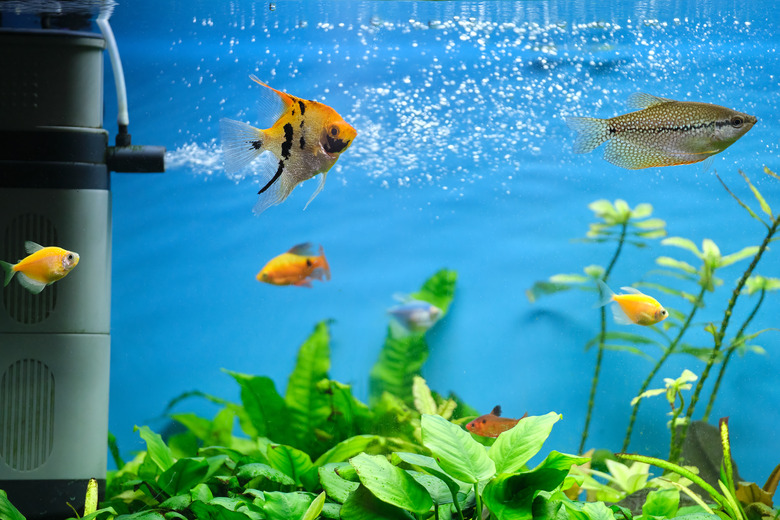How To Make A Self-Cleaning Aquarium
A self-cleaning turtle tank or self-cleaning aquarium for fish can go a long way to reduce the amount of time you will need to spend cleaning and maintaining the tank. It will take a bit more work to design and set up the aquarium initially, but you will benefit from its self-sustaining nature moving forward. Select the right tank, filters, plants, and fish to design a low-maintenance aquarium for your home.
About the self-cleaning aquarium
About the self-cleaning aquarium
In a regular aquarium, you need to regularly clean and change out the water to maintain a healthy environment for your fish. This is because fish waste and uneaten food cause a buildup of nitrate in the water, which can be fatal at high enough levels.
When you create a self-cleaning aquarium, you create an ecosystem that prevents nitrate buildup in the water. You do this by stocking appropriate plants and fish in your tank and ensuring that you have sufficient lighting and filters set up to maintain the balance. While you will still need to take steps to maintain the fish and plants and occasionally clean out the water, you will significantly decrease the amount of time spent doing water changes. This not only saves you time but it also makes for a more peaceful life for your fish.
Select and clean the tank
Select and clean the tank
Select an appropriate-size tank for your self-cleaning aquarium. A tank between 30 and 200 gallons is ideal, although if you aren't an experienced fishkeeper, it may be best to start with a tank on the smaller end of the spectrum. Scrub the aquarium thoroughly. It is important to start with a clean tank before starting to add substrate, water, or fish.
Add substrate and plants
Add substrate and plants
Next, add a bed of substrate to the tank. Substrate fulfills multiple purposes in your aquarium ecosystem. It is necessary for rooting the aquarium plants and also provides a home for the beneficial bacteria in your tank.
You can purchase a mineral-rich substrate online or at your local aquarium store. This soil serves as the first layer of substrate and provides the nutrients your aquarium plants need. Then, add a layer of sand and finally a layer of gravel to complete the substrate base. Fill the tank with distilled or filtered water. Avoid tap water that contains harmful chlorine and other contaminants.
The next step is to add the live plants to your tank. Avoid overplanting in your tank, as this can cause crowding. Consider plants like rotala green or hair grass for the bed of your aquarium and cabomba or duckweed as surface plants. Java moss is a good option to cover branches. Once you have added the plants, allow them to grow and get established for a couple of weeks before continuing to set up your aquarium.
Add filters and lighting
Add filters and lighting
Next, add filters and other kits necessary to maintain your fish and plants. This includes high-quality filters and air pumps. Be sure to check the instructions for the filter you select and clean the filter regularly. You will also need a water heater and a temperature monitoring kit to keep the water at the ideal temperature for your fish.
Fish and plants need light as well. While natural light is usually sufficient for this purpose, if your tank is in a basement or dark part of the house, you may want to add additional lighting. Don't forget an ammonia testing kit. While a properly set up self-cleaning aquarium should not have a buildup of ammonia, it is important to monitor ammonia levels and clean or change the water as needed if ammonia levels do increase.
Stock fish and other organisms
Stock fish and other organisms
Once the filters and equipment are working properly, it is time to start adding critters to your tank. Start with micro critters that feed on algae and residue. These critters serve a dual purpose, as they not only help clean the tank when they feed but they also serve as a food source for the fish you will add to the tank later. Some creatures to consider include daphnia, micro planarian, and snails. Wait for about two weeks after adding these critters before adding fish to the tank.
The final step in setting up your self-cleaning aquarium is to add the fish. Select fish appropriate for the size of your tank and don't overstock, as this can throw off the balance of your ecosystem. Fish like hoplo catfish, mollies, and platies are great choices since they feed on algae. Bloodfin and neon tetras are friendly, low-maintenance fish who will add good variety to your fish tank.
